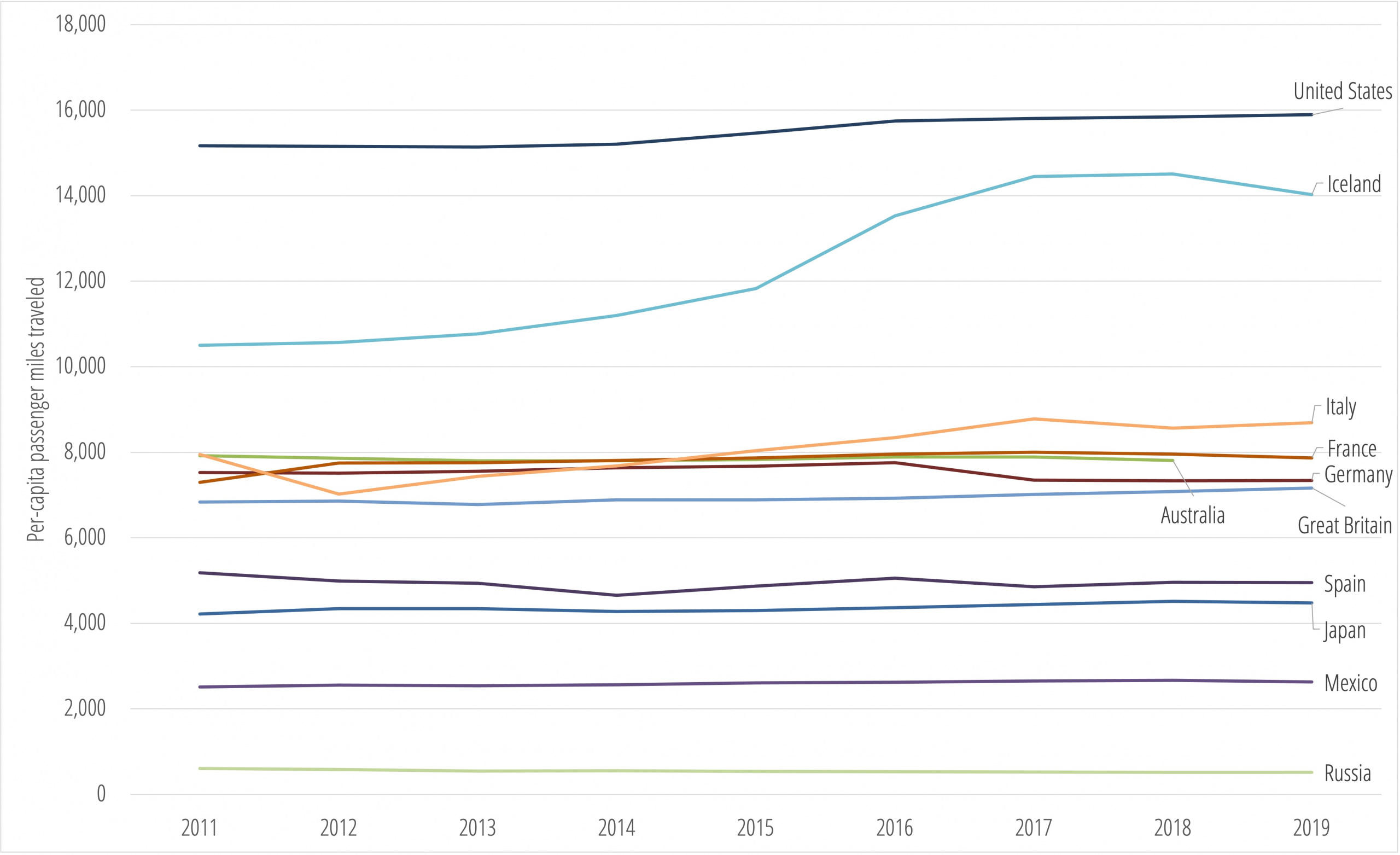
Bryn Huxley-Reicher
Former Policy Analyst, Frontier Group
Americans drive a whole lot more than most other people in the world. That means more noise, more pollution and more deaths. Maybe it's time to rethink how we get around.
Former Policy Analyst, Frontier Group
This is the first post in Frontier Group’s “Fact File” series, presenting new and interesting facts on the issues on which we work.
Americans drive a lot. Far more than residents in most other countries.
That may not come as a shock, but it has implications for all of our lives. Transportation is the largest source of greenhouse gas emissions in the United States. Cars kill tens of thousands of Americans and injure millions more each year. The cars, trucks and buses that jam our roads are loud, and spew air pollution that damages nearly every facet of human health. Driving fewer miles wouldn’t solve all of those problems, but it certainly wouldn’t hurt.
To quantify just how much more Americans drive than people in other countries, I analyzed international data from the Organization for Economic Co-operation and Development (OECD) and compared it to data from the U.S. Bureau of Transportation Statistics.1 The OECD presents its data in terms of passenger-miles traveled, not the typical U.S. metric of vehicle-miles traveled, accounting not just for the distance traveled by vehicles but also their occupancy.2 Two people driving 10 miles in a car together would be counted as 10 vehicle-miles traveled but 20 passenger-miles traveled. Also, though the OECD data is for all “road” travel, I only included U.S. data for miles driven in cars, motorcycles and trucks, not traveled in buses or on public transportation.
Per capita passenger miles traveled on roads, selected OECD countries and U.S., 2011-20193

The average American traveled 1.98 times more miles on the road each year than the average resident of France, 2.06 times more than the average German, and 2.23 times more than the average person in Great Britain.4 Residents of those countries often enjoy communities where more destinations can be accessed on foot, by public transportation, or by intercity rail.
Road travel produces environmental and quality of life impacts around the world, but those problems are particularly severe in the U.S. and a lot of public money is spent to protect the transportation status quo. Shifting to electric vehicles and making our roadways safer can reduce many of the negative impacts of driving. But we could accomplish even more by providing options that would enable Americans to drive less and live more.
Photo: Nabeel Sayed via Unsplash.
Notes
